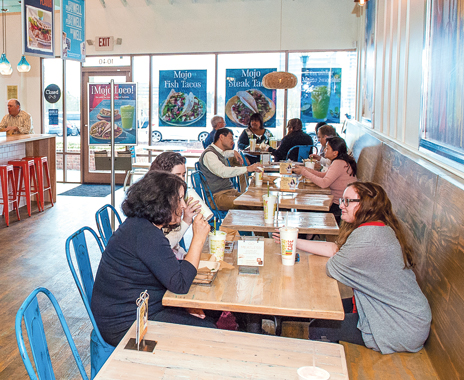When a restaurant operator needs funding, a Small Business Administration (SBA) loan may be a viable option. But while borrowing is easier today than it was five years ago, entrepreneurs should still be ready to clear some hurdles before submitting a loan application. The digital age has brought with it a slew of metrics that lenders are sure to check, and the recovering economy has prompted a higher level of scrutiny when it comes to creditworthiness.
First of all, a small business should know that with SBA loans, the government isn’t the actual lender. “It’s still a local, regional, or national bank that’s actually making the loan,” says Charles Watson, vice president of franchise development at Atlanta-based Tropical Smoothie Café. “They’re just getting a guarantee from the SBA.”
That guarantee supports both lenders and borrowers by mitigating some of the risks, says Seth Wheatley, associate vice president of SBA operations at Mountain America Credit Union in West Jordan, Utah. Under the 7(a) program—the route most quick-service and fast-casual loans follow—the SBA provides a guarantee to the lender that if the loan fails to perform, it will reimburse a portion of it.
SBA-backed loans are available to franchisees and individual operators. When considering funding requests, Wheatley says, a number of factors come into play. “We look very strongly at related experience operating this type of a business. The credit history of the owners themselves is also important,” he says.
Criteria for restaurant loans may be different than for other sectors, Wheatley says. The loans often involve leased space, eliminating physical real estate as a component of the collateral. Because of planned tenant improvements, equipment, furniture, and fixtures that may be included in the financing, Wheatley says, it does not hold a lot of value to look at it in terms of collateral, but rather in terms of credit. A strong balance sheet works in the borrower’s favor if assets are lean—something restaurant operators must keep in mind.
When it’s a potential franchisee asking for money, much of the information a bank or credit union reviews comes from FRANdata. The company owns and operates the Franchise Registry, which helps more than 6,000 member lenders evaluate potential borrowers by streamlining the application process for franchisors. Through this registry, franchisors can get blanket approval for their documents to meet SBA franchise affiliation rules, says FRANdata president Edith Wiseman.
Credit assessment data and franchise disclosure documents are other valuable tools lenders can access through FRANdata’s platform.
“We also work with franchisors to get their SBA data cleaned up, because many reports have shown that the data has not been accurate,” Wiseman says. With heavy competition for funding, the FRANdata site helps lenders reduce their risk in franchise lending while also helping franchisors boost their chances of getting SBA-guaranteed loans.
Since the recession, some brands have developed an internal support structure to help franchisees navigate the waters.
“We have somebody on our staff, one of our employees, whose sole job is to help the franchisee get their loan, whether it’s an SBA-guaranteed loan or a conventional loan or a lease or whatever it is,” says Ken Switzer, vice president and CFO of Marco’s Pizza. “The government regulations and requirements and details can be daunting, so it’s good to have a coach.”
The recession had a chilling impact on SBA lending, Tropical Smoothie’s Watson says. Large amounts of cash were being expected from borrowers up front, leaving lenders—and the SBA—with little risk, but also leaving little point to an actual loan. Today’s SBA lending environment has loosened considerably from the recession days, and Watson says it now strikes a good balance between overly strict and overly loose requirements.
Some recent discussions have revolved around personal resources and the SBA’s rules about the amount of liquidity a borrower may be required to inject into the business.
“The SBA is allowing lenders to make that determination rather than dictating it,” Wheatley says of current practices, which have changed to better suit the new economic environment. He believes it’s a good step forward, as it allows lenders to more finely cater the loans they’re making in an effort to better serve the needs of their markets while still maintaining acceptable levels of risk.
Evaluating the success rate of franchised operations helps lenders gauge how well the borrower may do in the long term.
“They call it the continuity rate, and it’s the percentage of stores that are open from year to year and that are continuing operations,” Switzer says, adding that a 95 percent continuity rate is often seen as a benchmark number within the industry.
Financial institutions are also using the information age to shed additional light on a borrower’s creditworthiness. Bank credit reports are already widely used, but Watson expects they will soon be required by the majority of banks.
“You have to have all your data out there. Your smiles and your warts all have to be out there for banks and lenders and the SBA to see,” Watson says. And that, he adds, is how it should be.













